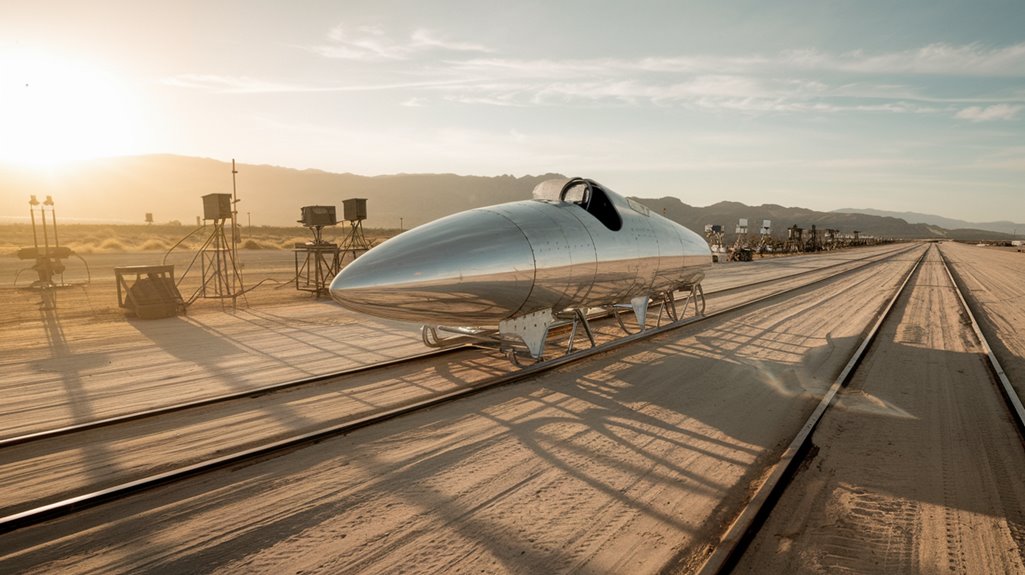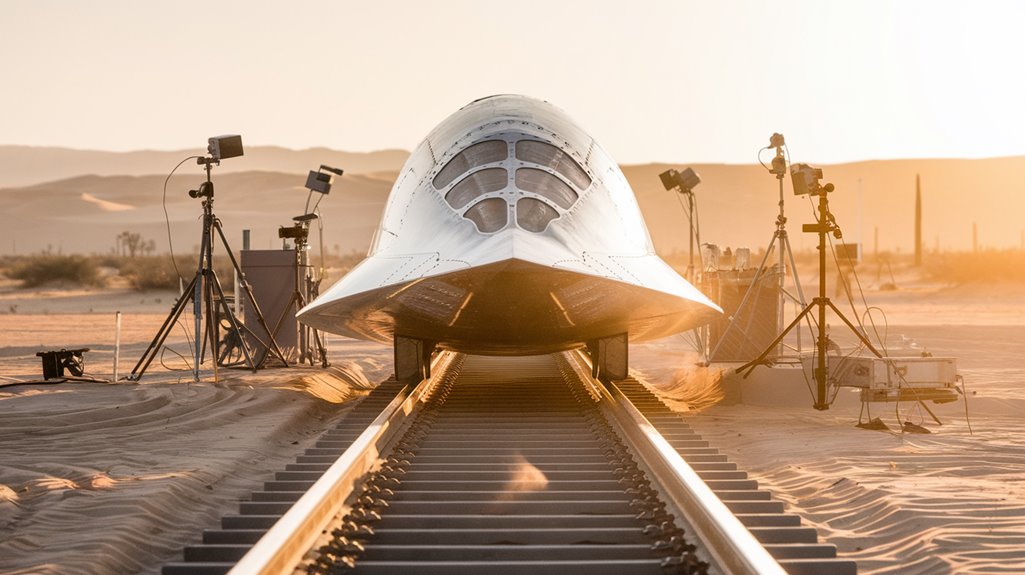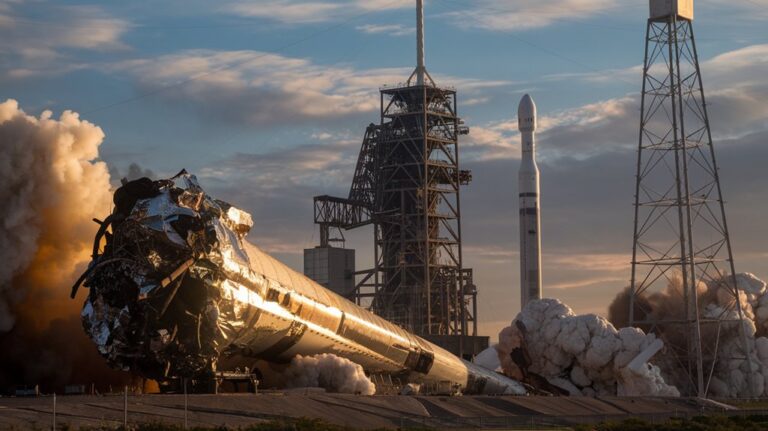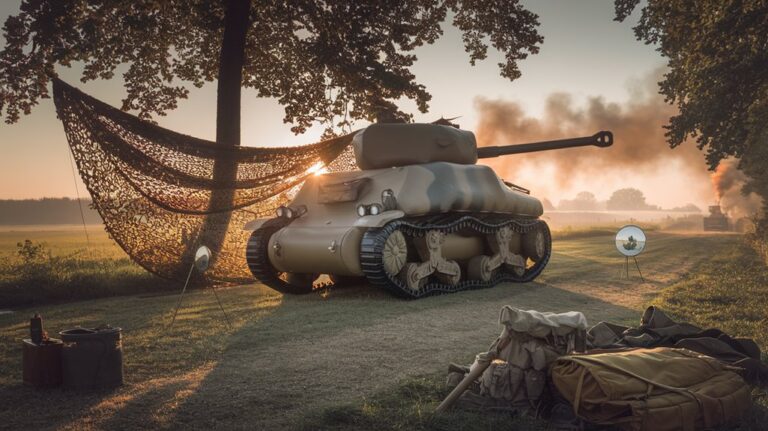From Rocket Sleds to Murphy’s Law: The Wacky Connection
During a bone-jarring rocket sled test in 1949, a frustrated Captain Edward Murphy discovered that all 16 sensors had been wired backwards, leading to completely useless data. You've probably heard the famous saying that grew from this mishap: "Anything that can go wrong will go wrong." But there's more to this story than a simple quote—it's a fascinating tale of daredevil experiments, record-breaking speeds, and how a moment of technical failure gave birth to one of the world's most quoted principles.
The High-Speed World of Rocket Sleds

How does a vehicle reach Mach 8.5 while staying on the ground? You'll find the answer in rocket sled technology, where vehicles mounted on specialized tracks achieve mind-bending speeds for research purposes.
These remarkable machines serve as crucial testing platforms for aerospace and military applications. The Naval Aviation Systems Consortium recently awarded a major contract for advancing this technology.
When you witness high speed testing in action, you'll see rocket-powered sleds screaming down rails at supersonic and hypersonic velocities. They're equipped with sophisticated braking systems and safety measures to protect valuable test equipment and data. Scientists and engineers rely on trained professionals only to operate these powerful machines.
You'll find these facilities at places like the Holloman High Speed Test Track, where engineers push the boundaries of what's possible on land.
From ejection seat trials to hypersonic component testing, rocket sleds offer a controlled, cost-effective way to simulate extreme conditions that aircraft and spacecraft encounter.
Captain Murphy's Frustrated Outburst
What you mightn't realize is that this seemingly simple outburst transformed into a fundamental principle of defensive design.
The original incident occurred during sensor calibration tests at Edwards Air Force Base in 1949.
In 2003, the significance of this principle was recognized when an Ig Nobel Prize was awarded to Murphy, Stapp, and Nichols for their contributions.
Colonel John Stapp, who led the rocket sled experiments, recognized the value in Murphy's observation and began sharing it at press conferences.
The concept quickly evolved from a frustrated engineer's remark into what you now know as Murphy's Law: "Anything that can go wrong will go wrong."
Dr. Stapp's Wild Rides and Record-Breaking Tests
While Captain Murphy's outburst led to a lasting principle, Dr. Stapp was busy pushing the limits of human tolerance through his daring rocket sled experiments.
You might find it hard to believe, but this fearless researcher subjected himself to 73 high-speed tests, reaching an astounding 632 mph and enduring forces up to 46 Gs. Zero sensor readings nearly derailed the entire project when an assistant installed all the equipment incorrectly. His intense focus on aviation medicine led him to spend over 60 hours at extreme altitudes for his research.
His body slammed from full speed to zero in just 1.4 seconds
- His ribs cracked, wrists broke, and bruises covered his body
- Sensors sometimes failed during tests, leaving him without essential data
- He rode the "Gee Whiz" sled in 1947, experiencing 35 Gs
- His wild rides took place on a 35,000-foot track in New Mexico
Stapp's dedication to understanding extreme forces revolutionized aircraft design and led to vital automotive safety features like seat belts, making your world considerably safer.
When Things Go Wrong: The Birth of a Universal Truth
In the midst of these groundbreaking rocket sled experiments, a frustrated Captain Edward Murphy made an observation that would unexpectedly become one of history's most quoted principles. When his team's sensors were installed incorrectly, leading to failed data collection, Murphy declared that if there's more than one way to do something, someone will choose the way that leads to disaster. The project involved all 16 sensors being wired backwards.
You might think Murphy's Law is just about pessimism, but you'd be wrong. It wasn't meant to be fatalistic – quite the opposite.
Murphy's original intent focused on preparedness strategies and preventing human error. He wanted engineers and designers to anticipate potential problems before they occurred. He later applied this philosophy as a reliability engineer at Hughes Aircraft.
While the simplified version "If anything can go wrong, it will" caught on with the public, Murphy's actual message was about being proactive, not defeatist.
Legacy of Speed, Safety, and Murphy's Famous Words

Murphy's frustrated observation sparked a cascade of remarkable achievements that extended far beyond his initial sensor mishap. Edward A. Murphy Jr. worked as an aerospace engineer during these groundbreaking tests. Oscar Eightball the crash test dummy paved the way for living test subjects.
You'll find that Major John Stapp's rocket sled tests redefined G force limits, proving humans could withstand up to 46 Gs – far exceeding the assumed 18 G fatality point. His groundbreaking research revolutionized safety protocols across multiple industries.
- Stapp hit an astonishing 632 mph on the rocket sled, earning the title "Fastest Man Alive"
- His advocacy led to mandatory seat belts in vehicles
- The tests provided vital data for instant deceleration studies
- Aviation and automotive industries transformed their safety standards
- A foundation in his name continues supporting automotive engineering innovation
Murphy's Law, born from this pioneering work, remains a reflection of how unexpected failures can lead to extraordinary advances in human knowledge.










